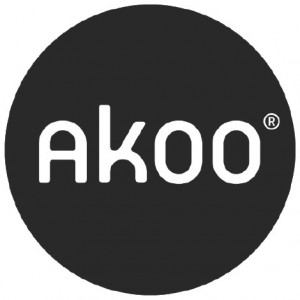Gail Chiasson, North American Editor
By the end of this year, the food courts of the 161 malls now running Akoo screens will be branded Akoo Pavilions – just one of numerous pieces of news that we got during an interview this week with Andy Stankiewicz, executive vice-president, chief communications officer, Akoo International Inc., Elmwood Park, Illinois.
 And Nielsen’s new Q1, 2011, Fourth Screen Network Audience Report figures are likely to confirm that Akoo’s approximate 20 screens in each of those pavilions are one of the places where advertisers want to be.
And Nielsen’s new Q1, 2011, Fourth Screen Network Audience Report figures are likely to confirm that Akoo’s approximate 20 screens in each of those pavilions are one of the places where advertisers want to be.
“It will certainly show that advertising on Akoo screens will be very effective for the client,” says Stankiewicz.
While this is the first time that Akoo has been included in the Fourth Screen quarterly reports since Nielsen started producing them in 2010, we learned that Akoo is listed as having the largest average minute audience in both the Age 12+ and Age 16+ consumer groups and among the top five in the Age 18+ groups (all of whom are very close in numbers).
Nielsen defines average minute exposures as ‘the number of people in proximity to the screen at any given point in time that have indicated an involvement with the media.’ In other words, this isn’t just people passing buy, but who are actually watching and engaged.
While admittedly Akoo screens are located in the food courts where people spend a lot of dwell time (averaging 20-to-30 minutes compared to some of the companies in the report – meaning that these quantitative reports tend to somewhat compare apples to oranges) Akoo’s figures tend to be impressive across all the report sectors that are geared to help make it easier for agencies and advertisers to research, plan and buy advertising.
Nielsen also measures gross minute exposures and looks at visits and total exposures (for a typical 28-day ad schedule on the network for a typical advertiser). It defines ‘visits’ as the ‘number of people in proximity to the screen who noticed the media and would have been exposed to the advertising’. In this new report, Akoo is the second largest network in visits Age 12+, first largest network in visits Age 16+, and second largest network in visits Age 18+.
“With our integration of mobile, social and location-based media, the Nielsen report will definitely help us,” says Stankiewicz. “While we have and will continue to use Arbitron studies – and have a new one beginning with Arbitron at the moment – being part in Nielsen increases our credibility.”
With Akoo’s rebranding of the food courts as Akoo Pavilions, Akoo hopes to make them as full ‘destinations’ where visitors not only experience its digital TV networks, it wants them to be full entertainment centres with custom exntertainment; Wi-Fi access; the ability to download for mobile and social activity, including integration with Facebook and Twitter; a chance to learn of ‘Daily Deals’; and a place to get special mobile offers, contests and coupons.
Further, with Akoo’s recent move into new quarters near Chicago’s O’Hare International Airport, where it has its own production studios, Akoo will now be developing more custom programming – accelerated since Billy Campbell came one board as president. With Akoo venues already attracting 64 million consumers a month, the new programming will be aimed at accentuating the new destination experience. (All its screens are controlled from a master control room in Akoo’s new offices.)
“This will really set us apart and heighten our engagement with consumers,” says Stankiewicz. “And in late Q3 and Q4, 2011, we’ll be running a full marketing campaign for the Akoo Pavilions.”
In addition to this, Akoo has just opened a new New York office at 600 Third Avenue, and has named Annie Gordon as vice-president sales, New York, and Scott Liss as vice-president sales, Chicago. A sales v-p in Los Angeles will be named shortly.
And as if that isn’t enough news for this fast rolling company, we’ve learned that it has just received a Canadian patent for its technology – adding to its patents for the U.S., Mexico, China, Australia and Russia.
Can international expansion be far behind?

Follow DailyDOOH